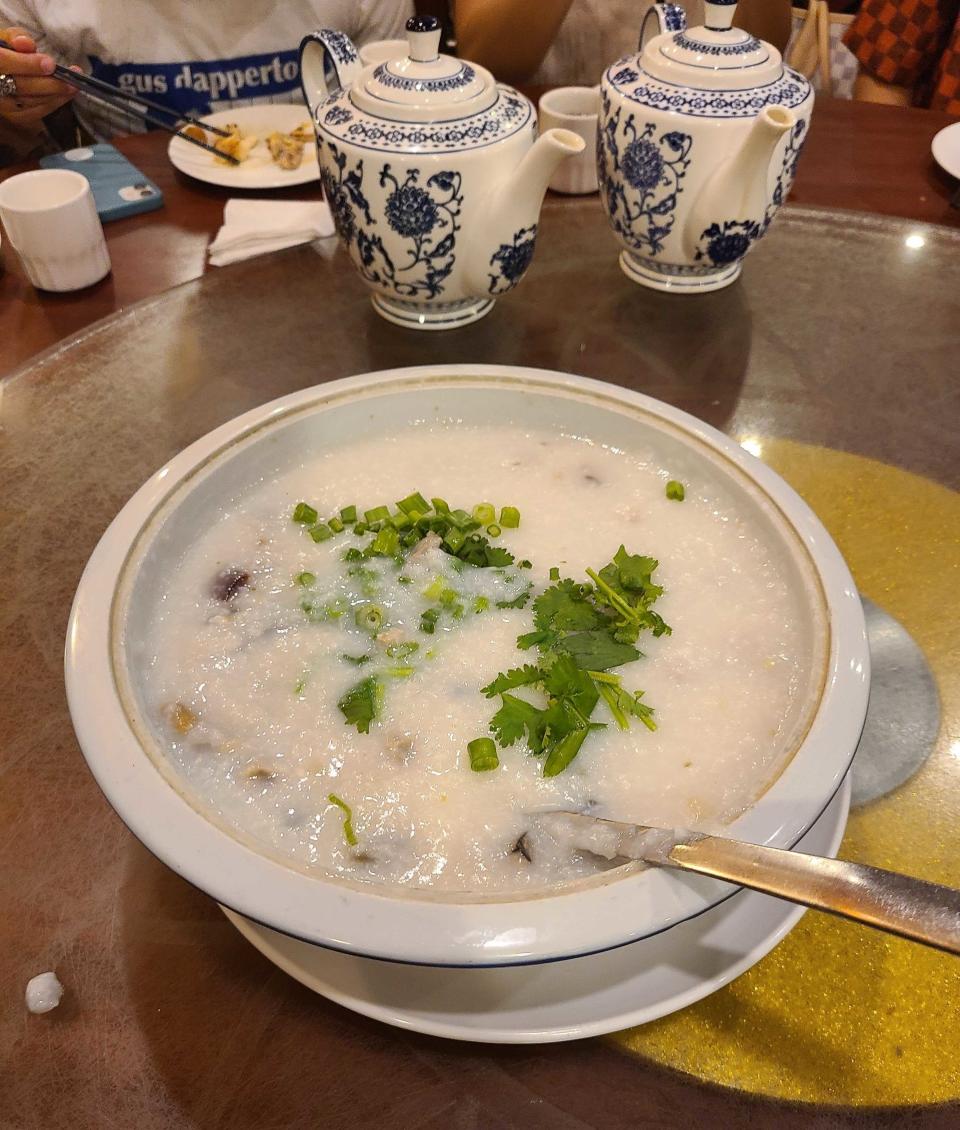This TikToker Went Viral For Sharing His Secret To Figuring Out Whether A Chinese Restaurant Is Actually Good (And His Method Applies To Several Other Cuisines Too)
We've all been there — hangrily sorting through endless results and finicky reviews to find a good, authentic Chinese place to try. Well, the next time you find yourself on Yelp, you can skip the "highest rated" filter because Freddie Wong just revealed an easy, surefire way to find the best Chinese restaurant near you (and it's not going to have five stars).

In a viral video that's since garnered 8.5M views on TikTok and 7.7M views on Twitter, the filmmaker and eSports player reveals, "The easiest way to find authentic Chinese food, assuming you’re living in a major metropolitan area, is to go on Yelp and look for restaurants with 3.5 stars, and exactly 3.5 stars."
To stress why 3.5 stars exactly, Wong first pulls up the Yelp page of a P.F. Chang's with 2.5 stars (and is "obviously bad," he says). He then shows the Yelp page of Din Tai Fung — a globally-renowned, Michelin-starred Chinese restaurant — with four stars and comments, "Too many stars; too many white people like it. The service is too good, the food is not as good as it could be."

Next, he shows the Yelp pages of two local, authentic Chinese restaurants with 3.5-star ratings. "The waiters are not going to pay attention to you," he acknowledges. "They're going to be rude, but it's going to taste better."

"The dumplings here are better [than Din Tai Fung's]. I've been here," he adds, personally attesting to Shanghai Dumpling House. For reference, Din Tai Fung specializes in soup dumplings and noodles.
Wong then breaks down his theory behind the 3.5-star rule. "Cultural expectations for service are different in Asia," he explains, specifying that customer service in Asia is less proactive than in the US. "They're not going to come up to you. They're not going to just proactively give you refills. You need to flag down the waiters."

"People on Yelp are insufferable. They're dinging all these restaurants because the service is bad," he continues. But because the food is so good, it balances out the bad service, leaving these restaurants with 3.5-star ratings.
Paramount Global Distribution Group
Now, if you're rushing to look up your go-to Chinese spot on Yelp, the 13.3K comments on TikTok have already beaten you to it. And according to them, Wong's theory checks out.

In an interview with Today Food, Wong acknowledged the overwhelmingly positive response to his video. "I have found very little pushback on my theory," he said, "which is heartening, because I hope it encourages people to go out and eat more food from not only Chinese restaurants, but restaurants representing the whole world of cultural cuisines." And as some comments point out, his theory is not limited to Chinese restaurants.

However, his theory is limited to Yelp, as opposed to online review sites in general. "Google ratings [are] hard," Wong responded when a commenter asked if his 3.5-star rule works for Google Maps. "Everything lives between four and 4.8 with seemingly no rhyme or reason. I've had [4.1-star restaurants] kick the snot out [4.7-star restaurants], etc."
More broadly, Wong reflected on the significance of online reviews and the archetype of highly-rated restaurants. "A good Yelp review doesn't mean it's a good restaurant. It simply means the restaurant is good at doing things that won't hurt their online rating," he said, specifying that restaurants with higher ratings on Yelp typically offer bar service and limited menus, thereby minimizing their customers' risk of bad staff interactions.

Wong clarified that though he has nothing against highly-rated restaurants on Yelp, he finds that people only eating at them are only eating at boring places.
This is particularly strategic because, as Wong stated, poor service is a big reason why customers get annoyed enough to leave negative reviews on Yelp in the first place. And this feedback loop points to perhaps the crux of American cultural expectations for the food service industry: The customer is always right — a norm supported by not only American tipping culture but a federal minimum wage of $2.13 per hour for tipped employees. On the other hand, there's no standard tipping culture in Asia. At best, it's a courtesy. At worst, it's rude. There's less emphasis on constant, attentive service and more on function.

Similarly, if you've ever visited Europe, you'll know that tipping generally isn't required but appreciated as a courtesy (though it's still usually less than the 15–20% standard in the US). In many European countries, staff also won't bring the bill unless it's requested as there's less emphasis on turnover (and subsequently, quick service) and more emphasis on leisure.
So, as far as authentic Chinese restaurants go, most Asian Americans don't expect the same sort of service they would at traditionally American restaurants. Actually, it's such a cultural norm that, in 2011, food writer Mai Pham wrote a whole article about it (aptly titled, Why I Don't Expect Good Service in Asian Restaurants) after reading a review of a Vietnamese restaurant in the paper that made "a big to-do" about poor service.
In the article, Pham said, "To me, however, I didn't take hasty as poor service, or unsmiling as unfriendly; it's just the way things are at Asian restaurants, where the focus is more on food than service."
Likewise, it's well known within the Asian American community that the best authentic restaurants have less-than-stellar ratings online, whether due to service or non-Americanized food. In fact, while at a local Cantonese restaurant this week — which does have 3.5 stars on Yelp, I just checked! — I asked my friends (all of us Asian American) what they thought of Wong's theory. The resounding answer? Not only is "good service" not expected, but the more apathetic the staff is, the better it means the food will be.

(This was taken partway through the meal — just look at those empty dishes. If you're ever in New York, you should 110% check out Congee Village.)